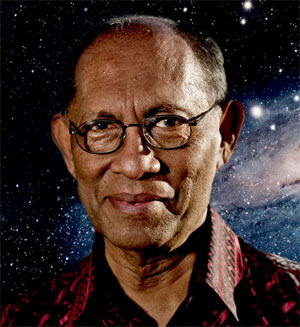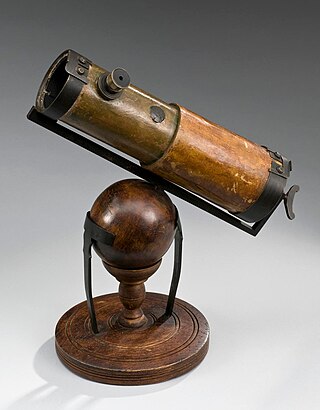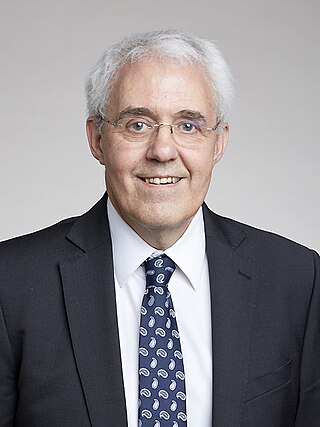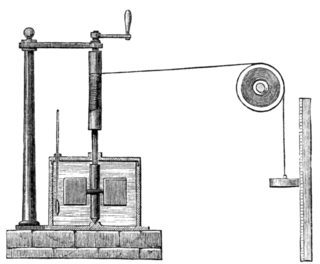Related Research Articles

Sir Fred Hoyle (24 June 1915 – 20 August 2001) was an English astronomer who formulated the theory of stellar nucleosynthesis and was one of the authors of the influential B2FH paper. He also held controversial stances on other scientific matters—in particular his rejection of the "Big Bang" theory (a term coined by him on BBC Radio) in favor of the "steady-state model", and his promotion of panspermia as the origin of life on Earth. He spent most of his working life at St John's College, Cambridge and served as the founding director of the Institute of Theoretical Astronomy at Cambridge.

Nalin Chandra Wickramasinghe is a Sri Lankan-born British mathematician, astronomer and astrobiologist of Sinhalese ethnicity. His research interests include the interstellar medium, infrared astronomy, light scattering theory, applications of solid-state physics to astronomy, the early Solar System, comets, astrochemistry, the origin of life and astrobiology. A student and collaborator of Fred Hoyle, the pair worked jointly for over 40 years as influential proponents of panspermia. In 1974 they proposed the hypothesis that some dust in interstellar space was largely organic, later proven to be correct.
(Geoffrey) Michael Rowan-Robinson is an astronomer, astrophysicist and Professor of Astrophysics at Imperial College London. He previously served as head of the astrophysics group until May 2007 and from 1981 to 1982, and as Gresham Professor of Astronomy.

Jayant Vishnu Narlikar is an Indian astrophysicist and emeritus professor at the Inter-University Centre for Astronomy and Astrophysics (IUCAA). He developed with Sir Fred Hoyle the conformal gravity theory, known as Hoyle–Narlikar theory. It synthesises Albert Einstein's theory of relativity and Mach's principle. It proposes that the inertial mass of a particle is a function of the masses of all other particles, multiplied by a coupling constant, which is a function of cosmic epoch.

Charles L. Bennett is an American observational astrophysicist. He is a Bloomberg Distinguished Professor, the Alumni Centennial Professor of Physics and Astronomy and a Gilman Scholar at Johns Hopkins University. He is the Principal Investigator of NASA's highly successful Wilkinson Microwave Anisotropy Probe (WMAP).

The Max Born Medal and Prize is a scientific prize awarded yearly by the German Physical Society (DPG) and the British Institute of Physics (IOP) in memory of the German physicist Max Born, who was a German-Jewish physicist, instrumental in the development of quantum mechanics. It was established in 1972, and first awarded in 1973.

The Isaac Newton Medal and Prize is a gold medal awarded annually by the Institute of Physics (IOP) accompanied by a prize of £1,000. The award is given to a physicist, regardless of subject area, background or nationality, for outstanding contributions to physics. The award winner is invited to give a lecture at the Institute. It is named in honour of Sir Isaac Newton.
The Nevill Mott Medal and Prize is an award presented in selected years by the Institute of Physics in the United Kingdom, for distinguished research in condensed matter or materials physics. It was first established in 1997 thanks to a donation from Sir Nevill Mott's family. Sir Nevill Mott was one of the outstanding British condensed matter theorists and won a Nobel Prize in Physics in 1977. He died in 1996. The award consists of a silver medal and a prize of £1000.

The Edward Appleton Medal and Prize is awarded by the Institute of Physics for distinguished research in environmental, earth or atmospheric physics. Originally named after Charles Chree, the British physicist and former President of the Physical Society of London, it was renamed in 2008 to commemorate Edward Victor Appleton, winner of the Nobel prize for proving the existence of the ionosphere.
Gilles Chabrier is a French astrophysicist who is best known for his work on brown dwarfs. He is currently a professor of astronomy at the University of Exeter.

Anthony Raymond Bell is a British physicist. He is a professor of physics at the University of Oxford and the Rutherford Appleton Laboratory. He is a senior research fellow at Somerville College, Oxford.

Sheila Rowan is a Scottish physicist and academic, who is Professor of Physics and Astronomy at the University of Glasgow in Scotland, and director of its Institute for Gravitational Research since 2009. She is known for her work in advancing the detection of gravitation waves. In 2016, Rowan was appointed the (part-time) Chief Scientific Advisor to the Scottish Government.

Hiranya Vajramani Peiris is a British astrophysicist at the University of Cambridge, where she holds the Professorship of Astrophysics (1909). She is best known for her work on the cosmic microwave background radiation, and interdisciplinary links between cosmology and high-energy physics. She was one of 27 scientists who received the Breakthrough Prize in Fundamental Physics in 2018 for their "detailed maps of the early universe".
The Clifford Paterson Medal and Prize is awarded by the Institute of Physics. It was established in 1981 and named after Clifford Copland Paterson. The prize is awarded each year for exceptional early career contributions to the application of physics in an industrial or commercial context. The medal is bronze and is accompanied by a prize of £1000 and a certificate.

The James Joule Medal and Prize is awarded by the Institute of Physics. It was established in 2008, and was named in honour of James Prescott Joule, British physicist and brewer. The award is made for distinguished contributions to applied physics. The medal is silver and is accompanied by a prize of £1000.
The Institute of Physics awards numerous prizes to acknowledge contributions to physics research, education and applications. It also offers smaller specific subject-group prizes, such as for PhD thesis submissions.
The Buchalter Cosmology Prize, established in 2014, is a prestigious annual prize bestowed by Dr. Ari Buchalter.

Sembukuttiarachilage Ravi Pradip SilvaCBE FREng, commonly known as S. Ravi P. Silva or Ravi Silva, is a Sri Lankan-British professor and the Director of the Advanced Technology Institute (ATI) at the University of Surrey. He also heads the Nano-Electronics Centre (NEC), an interdisciplinary research activity. His research interests include nanotechnology, large-area electronics, and Perovskite and organic solar cell. He is also the Founder and the Chief Scientific Officer for Silveray.

Erminia Calabrese, FLSW, is a Professor of Astronomy and the Director of Research at Cardiff University School of Physics and Astronomy. She works in observational cosmology using the cosmic microwave background radiation to understand the origins and evolution of the universe. In 2024 she became a Fellow of the Learned Society of Wales, and in 2022 she was awarded the Institute of Physics Fred Hoyle medal and the Learned Society of Wales Dillwyn medal.
Isabelle Baraffe is a French physicist who is a professor of astrophysics at the University of Exeter. Her research involves the development of new astrophysical models to understand low mass stars and exoplanets. She was awarded a Royal Society Wolfson Research Merit Award in 2010 and delivered the 2023 European Astronomical Society Lodewijk Woltjer Lecture.
References
- ↑ "Fred Hoyle Medal and Prize". Institute of Physics. Retrieved 24 January 2020.
- ↑ "Fred Hoyle medal recipients". Institute of Physics.
- ↑ "2024 Fred Hoyle Medal and Prize". 14 Oct 2024.
- ↑ "2022 Fred Hoyle Medal and Prize". 24 Oct 2022.
- ↑ "Gilles Chabrier, recipient of the 2019 Fred Hoyle Medal and Prize awarded by Institute of Physics (IOP)". ENS de Lyon. 3 July 2019.
- ↑ "Exeter experts awarded prestigious Institute of Physics medals". University of Exeter. 2 July 2019.
- ↑ Kumara, Sisira (13 July 2018). "Two Sri Lankan Scientists Win Institute of Physics Awards for the Year 2018". Sri Lankan Scientist.
- ↑ "Professor Hiranya Peiris wins prestigious Fred Hoyle IOP Medal and Prize". UCL.
- ↑ Mannervik, Sven (16 August 2018). "Hiranya Peiris receives Fred Hoyle Medal and Prize". Fysikums blogg. Stockholme University.
- ↑ "Cardiff academics pick up prestigious physics awards". Cardiff University. 3 July 2017.
- ↑ Gaal, Rachel (5 July 2016). "Institute of Physics Awards go to Two APS Fellows". American Physical Society.
- ↑ "Physics accolades for STFC scientists". WIRED GOV LTD. 2 July 2014.
- ↑ "Early Universe research wins prize". Lancaster University. 5 July 2012.
- ↑ Reeves, Danielle (10 October 2007). "Success for Imperial physicists at prestigious awards". Imperial College London.